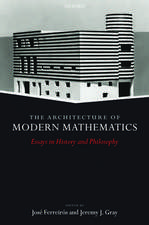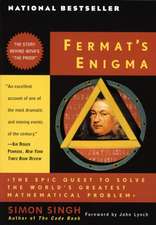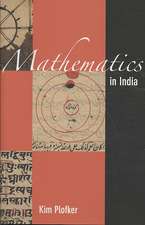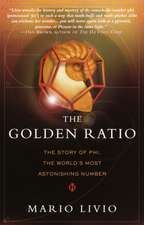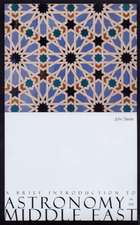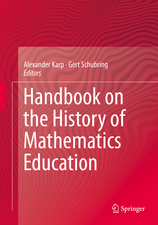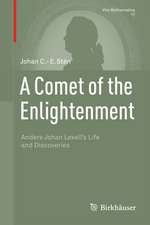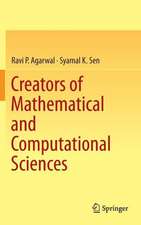Ancient Astronomical Observations and the Study of the Moon’s Motion (1691-1757): Sources and Studies in the History of Mathematics and Physical Sciences
Autor John M. Steeleen Limba Engleză Hardback – 17 feb 2012
| Toate formatele și edițiile | Preț | Express |
|---|---|---|
| Paperback (1) | 636.63 lei 6-8 săpt. | |
| Springer – 23 aug 2016 | 636.63 lei 6-8 săpt. | |
| Hardback (1) | 644.18 lei 6-8 săpt. | |
| Springer – 17 feb 2012 | 644.18 lei 6-8 săpt. |
Din seria Sources and Studies in the History of Mathematics and Physical Sciences
- 20%
 Preț: 756.15 lei
Preț: 756.15 lei - 18%
 Preț: 907.11 lei
Preț: 907.11 lei - 15%
 Preț: 667.86 lei
Preț: 667.86 lei - 18%
 Preț: 1434.29 lei
Preț: 1434.29 lei -
 Preț: 387.75 lei
Preț: 387.75 lei - 15%
 Preț: 638.57 lei
Preț: 638.57 lei - 18%
 Preț: 896.70 lei
Preț: 896.70 lei - 15%
 Preț: 643.65 lei
Preț: 643.65 lei - 18%
 Preț: 916.25 lei
Preț: 916.25 lei - 18%
 Preț: 1124.92 lei
Preț: 1124.92 lei - 18%
 Preț: 963.29 lei
Preț: 963.29 lei - 15%
 Preț: 652.31 lei
Preț: 652.31 lei - 18%
 Preț: 1244.89 lei
Preț: 1244.89 lei - 23%
 Preț: 686.60 lei
Preț: 686.60 lei - 15%
 Preț: 649.71 lei
Preț: 649.71 lei -
 Preț: 390.25 lei
Preț: 390.25 lei - 15%
 Preț: 580.17 lei
Preț: 580.17 lei - 18%
 Preț: 1123.35 lei
Preț: 1123.35 lei - 15%
 Preț: 641.03 lei
Preț: 641.03 lei - 15%
 Preț: 581.14 lei
Preț: 581.14 lei - 18%
 Preț: 796.31 lei
Preț: 796.31 lei - 18%
 Preț: 2119.49 lei
Preț: 2119.49 lei - 24%
 Preț: 860.19 lei
Preț: 860.19 lei - 15%
 Preț: 645.14 lei
Preț: 645.14 lei -
 Preț: 384.48 lei
Preț: 384.48 lei - 18%
 Preț: 1410.63 lei
Preț: 1410.63 lei - 18%
 Preț: 969.28 lei
Preț: 969.28 lei - 15%
 Preț: 642.03 lei
Preț: 642.03 lei - 18%
 Preț: 1113.71 lei
Preț: 1113.71 lei - 15%
 Preț: 662.16 lei
Preț: 662.16 lei - 18%
 Preț: 963.29 lei
Preț: 963.29 lei - 15%
 Preț: 647.59 lei
Preț: 647.59 lei -
 Preț: 395.63 lei
Preț: 395.63 lei - 18%
 Preț: 941.50 lei
Preț: 941.50 lei - 15%
 Preț: 709.56 lei
Preț: 709.56 lei - 18%
 Preț: 901.26 lei
Preț: 901.26 lei - 15%
 Preț: 695.53 lei
Preț: 695.53 lei - 24%
 Preț: 1294.92 lei
Preț: 1294.92 lei
Preț: 644.18 lei
Preț vechi: 757.85 lei
-15% Nou
Puncte Express: 966
Preț estimativ în valută:
123.28€ • 128.23$ • 101.77£
123.28€ • 128.23$ • 101.77£
Carte tipărită la comandă
Livrare economică 15-29 aprilie
Preluare comenzi: 021 569.72.76
Specificații
ISBN-13: 9781461421481
ISBN-10: 1461421489
Pagini: 172
Ilustrații: XIV, 158 p.
Dimensiuni: 178 x 254 x 18 mm
Greutate: 0.52 kg
Ediția:2012
Editura: Springer
Colecția Springer
Seria Sources and Studies in the History of Mathematics and Physical Sciences
Locul publicării:New York, NY, United States
ISBN-10: 1461421489
Pagini: 172
Ilustrații: XIV, 158 p.
Dimensiuni: 178 x 254 x 18 mm
Greutate: 0.52 kg
Ediția:2012
Editura: Springer
Colecția Springer
Seria Sources and Studies in the History of Mathematics and Physical Sciences
Locul publicării:New York, NY, United States
Public țintă
ResearchCuprins
Preface.- 1. Introduction.- 2. Edmond Halley’s Discovery of the Secular Acceleration of the Moon.- 3. A Forgotten Episode in the History of the Secular Acceleration: William Whiston, Arthur Ashley Sykes and the Eclipse of Phlegon.- 4. The Gradual Acceptance of the Existence of the Secular Acceleration During the 1740s.- 5. Eighteenth Century Views of Ancient Astronomy.- 6. The First Detailed Study of the Moon’s Secular Acceleration: Richard Dunthorne.- 7. An Integrated Approach: Tobias Mayer.- 8. The Final Synthesis: Jérôme Lalande.- 9. Epilogue.- References.- Index.
Textul de pe ultima copertă
Historians of astronomy, historians of the ancient world, and astronomers will be enriched by the unique and captivating topics covered in this book. This volume contains the first detailed study of the use of ancient and medieval astronomical observations in order to investigate the moon’s secular acceleration—from its discovery by Edmond Halley to the establishment of the magnitude of the acceleration by Richard Dunthorne, Tobias Mayer and Jérôme Lalande in the 1740s and 1750s. The discovery of a gradual acceleration in the moon’s mean motion by Halley in the last decade of the seventeenth century sparked a revival of interest in reports of astronomical observations from antiquity. These observations provided the only means with which to study the moon’s ‘secular acceleration’ as this newly-discovered acceleration became known.
John M. Steele tells the story of how the secular acceleration of the moon was discovered, the reception of its discovery, and the first attempts to determine its size of the acceleration from historical data. Additionally, this study addresses the wider question of how ancient and medieval astronomy was viewed in the eighteenth century; particularly European perceptions of ancient Greek, Arabic, Babylonian, and Chinese astronomy.
Making extensive use of previously unstudied manuscripts, this book explores how different astronomers used the same small body of preserved ancient observations in different ways in their work on the secular acceleration. Further, the broader context of the study of the moon’s secular acceleration, including its use in debates of biblical chronology and the use of astronomy in determining geographical longitude, are examined.
John M. Steele tells the story of how the secular acceleration of the moon was discovered, the reception of its discovery, and the first attempts to determine its size of the acceleration from historical data. Additionally, this study addresses the wider question of how ancient and medieval astronomy was viewed in the eighteenth century; particularly European perceptions of ancient Greek, Arabic, Babylonian, and Chinese astronomy.
Making extensive use of previously unstudied manuscripts, this book explores how different astronomers used the same small body of preserved ancient observations in different ways in their work on the secular acceleration. Further, the broader context of the study of the moon’s secular acceleration, including its use in debates of biblical chronology and the use of astronomy in determining geographical longitude, are examined.
Caracteristici
Presents a detailed study of previously unexplored aspect of the history of astronomy The study makes extensive use of previously unpublished and unstudied manuscript material The work of eighteenth century lunar theory is place in a broader cultural context?





